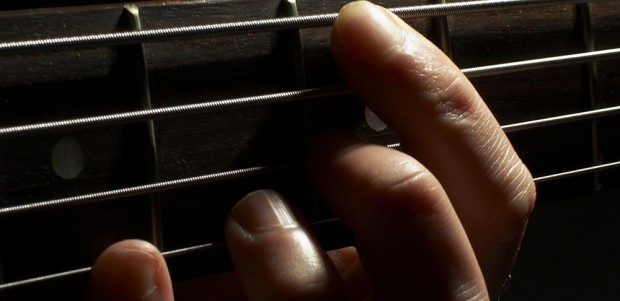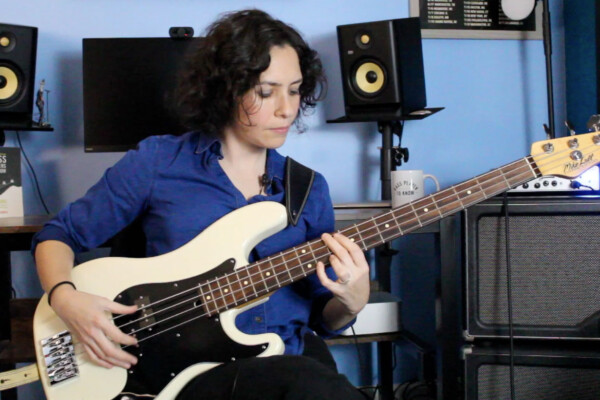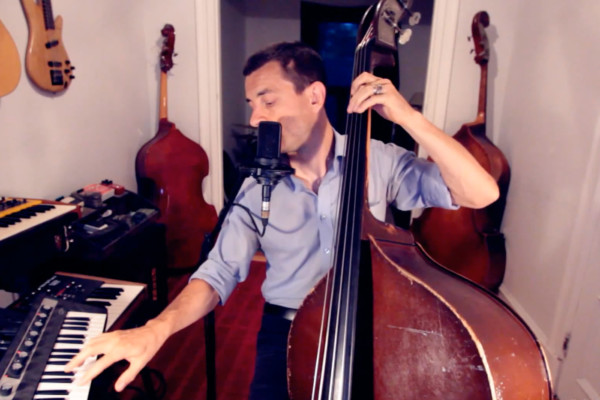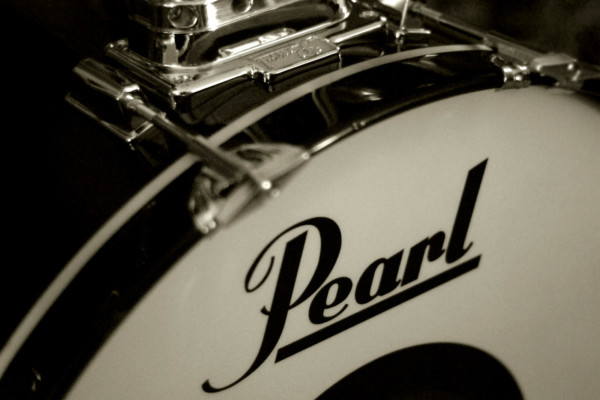Teaching (and Learning) Chords on the Bass

Q: I had a student ask if there was some way of learning chords like kids learn multiplication tables. Sounds like it would be handy but I couldn’t think of anything like that. Any ideas?
A: I assume your student was thinking of the grid-like table for learning multiplication.
I also couldn’t think of a way to do that visually, but it did get me thinking about how I learned my chord shapes and intervallic relationships inherent to chord construction.
Like many things, I learned the chord types one at a time. Then it became about the relationships between the chord I knew and one that was a slight variation of it (like learning a major arpeggio and then learning the difference between a major and minor arpeggio, or the difference between a major7 chord and a dominant chord). With each variation learned, you have an additional point of reference when looking at other chord types.
While flipping through a Real Book may make it seem like there are a million and one chord types, there are really just a few to get into muscle memory that will form the foundation for any variation a composer wants to add to one of those few primary chord types.
I’m not sure if you are speaking about chord shapes or just chord construction. Each chord type can be fingered any number of ways on the fretboard. I encourage students to find a shape that they like and internalize it and then work through variations of root position chord shapes before, finally, moving on to inversions and all of those varied shape possibilities.
Let’s just speak in terms of learning chord construction.
Here’s how I taught myself the chords.
Everything here is in relation to the major scale, so you want to first make sure that you know where each interval is in the scale, working from the root. In other words, make sure you know where the 3rd is from the root, and so on. Since we are focusing here on primary chords and not every variation possible, let’s just focus on the Root, 3rd, 5th, and 7th.
Major7 Chords:
I started with learning my Major7 chord. That is 1 3 5 7 from the major scale. From C = C E G B.
Find a comfortable shape on the fretboard and memorize it. First work on it in one octave until you can ‘see’ the shape on the fretboard. Move it all over the neck and practice playing Major7 arpeggios all over the fretboard. Now, play it over two octaves. Pay attention to the relationships of the chord tones both above and below the root. Try and see a mapped out version of that arpeggio on your fretboard.
I worked this one chord type until I could see it in my sleep.
Dominant Chords:
Then, I took the chord type that most closely resembled my Major7 arpeggio. The dominant chord. This is a major chord with a b7. 1 3 5 b7. From C = C E G B?.
Repeat the process. Get this under your fingers and in your minds eye. Pop back and forth between the major7 shape and the dominant shape.
Minor7 Chords:
The next step (or next closest variation relating to the major7 arpeggio) is the minor7 chord. This is just like dominant, except for having a ?3. From C = C E? G B?.
Rinse, repeat this process. Continue moving back through all of the chord types until you can play the appropriate shape for the chord type in any order.
Half-Diminished or Minor7 Chords:
As the name implies, this is our next variation and is just like the minor chord but with a ?5. Now we are playing 1 ?3 ?5 ?7. From C = C E? G? B?.
I consider these to be the foundation for the rest of the possibilities and variations. Once you have these 4 chord types and/or arpeggios under your fingers, you have taken the first big step to being able to play through changes and ‘see’ harmony on your fretboard.
Most variations beyond this will be the result of flatting or sharping various notes from the rest of the scale (the 2nd, 4th and 6th). These relationships can still be thought of in relation to the major scale but it is helpful if you’ve learned your modes well. If you know your modes, you can reduce the amount of things to keep in mind when looking at a chord or scale. Example, instead of thinking “Major scale with a ?2, ?3 and ?7”, you can just think “Dorian ?2”.
I have written quite a bit about ways to decipher chord symbols, but I would save that for later as it may just seem overwhelming at first. Take bite sized chunks and digest them fully, then take another bite and get to work. It all comes together more quickly than you’d think but it does take a concerted effort.
Get creative and think about how you learned other things in school (it sounds like you already are, since you were hoping for a multiplication table style chord chart). I used to make flash cards of chord types and have my girlfriend pull give me a random root note and then pull out a chord type flash card. I would then try to play that chord type or arpeggio from the appropriate root note. That helped me immensely. We also used to have fun throwing chord changes together in that same, random fashion to see how it all sounded (usually not that great but there were always some pleasant surprises in there).
Work on one thing at a time and focus. It will come! Also, continue to explore alternate perspectives. I always got a LOT from taking lessons from piano players and guitar players in order to get the perspective of a different instrument.
Good luck!
As always, I’d love to hear from you readers. How did you commit chord types, modes, arpeggios, and the like, to memory? Please share in the comments.
Have a question for Damian Erskine? Send it to [email protected]. Check out Damian’s instructional books, Right Hand Drive and The Improviser’s Path.



